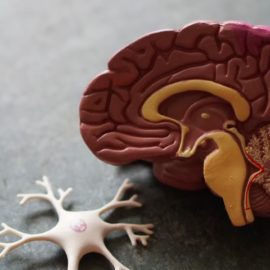

This article is an excerpt from the Shortform book guide to "How to Do Nothing" by Jenny Odell. Shortform has the world's best summaries and analyses of books you should be reading.
Like this article? Sign up for a free trial here.
Do you enjoy people for the sake of enjoying people? Do you have genuine friendships—or just glorified networking experiences?
In her book How to Do Nothing, Jenny Odell argues that doing nothing is meant to solve the problems created by the attention economy—the mindset of placing a monetary value on time and attention. One of these problems is social atomization.
Continue reading to understand this phenomenon and how it affects us all.
Social Atomization
Odell explains how the attention economy works and explores its negative impacts. One of its consequences is social atomization. Social atomization is people becoming disconnected from one another and their communities.
Odell explains that, in the 1980s, corporate deregulation—the elimination of laws and rules regarding corporate conduct—as well as the loss of labor power allowed the wealthy and major corporations to monetize much larger portions of people’s lives. The cutting of social safety nets and stagnation of wages also put people in a situation where they couldn’t say no to more work or worse working conditions without risking their livelihoods. This economic shift led to a mindset shift: People had to start thinking of their time and attention in terms of monetary value.
(Shortform note: The concept of the attention economy was first proposed by 20th-century American psychologist and economist Herbert A. Simon and amounted to a shift in how to understand information. Simon suggested that instead of thinking of information—advertising, media, ideas, and so on—as a scarce commodity sought out by consumers, we should instead think of the attention of consumers as a scarce commodity sought out by information (or the people who create it). This understanding informs many of the economic shifts Odell discusses, as companies changed strategies to adapt to a new, information-rich world.)
Since people are “always on,” they have less time to devote to nurturing connections with the people around them. In addition, succeeding in the attention economy requires people to constantly advocate for or “market” themselves through things like self-promotion or networking. This leads them to see each other as customers, or potential sources of monetary value, rather than as friends and community members.
Social atomization has contributed in large part to the modern era’s epidemic of loneliness and lack of meaning in life, explains Odell. It also hampers social and political activism—when people lack deep connections with one another, it’s more difficult to organize them in pursuit of a specific goal.

———End of Preview———
Like what you just read? Read the rest of the world's best book summary and analysis of Jenny Odell's "How to Do Nothing" at Shortform.
Here's what you'll find in our full How to Do Nothing summary:
- Why we always feel the need to be doing something
- Why you should devote time to non-productive activities
- How to engage with the world in a deeper, more satisfying way






